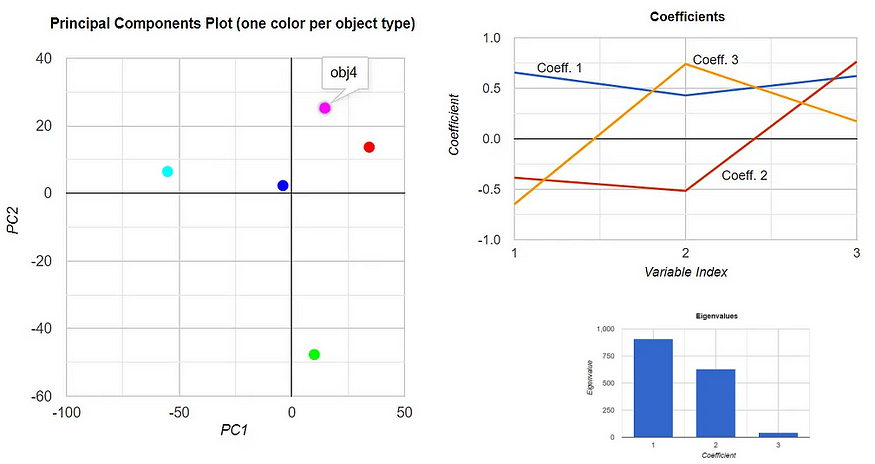
Like Principal Components Analysis? New Paper Reports It Can Produce “Phantom Oscillation” Artifacts
Last Updated on December 11, 2023 by Editorial Team
Author(s): LucianoSphere (Luciano Abriata, PhD)
Originally published on Towards AI.

Principal Component Analysis (PCA), a widely used statistical method for simplifying complex datasets, has been found to produce “phantom oscillations” — patterns that appear in the data although they don’t exist in the original data set. Read on to know more about this, of special relevance to you if you are used to applying PCA on datasets with the features discussed. This also constitutes a chance to overview other limitations and disadvantages of PCA.
Figure composed by the author from his own PCA tool (here).
Principal Component Analysis (PCA) is a dimensionality reduction technique that projects the input variables that describe a set of objects into linear combinations of these variables to attempt maximize explanation of variance in as few variables as possible. PCA is very widely used to simplify complex data sets.
To know how exactly PCA works, check this out:
A tutorial stripping down low-level code that you can edit and run in your browser to understand PCA once and forever…
towardsdatascience.com
But no wonder the technique comes with its flaws. You probably already know or at least are unconsciously aware of the low interpretability of principal components (they are linear combinations of the features from the original data, but these combinations are not… Read the full blog for free on Medium.
Join thousands of data leaders on the AI newsletter. Join over 80,000 subscribers and keep up to date with the latest developments in AI. From research to projects and ideas. If you are building an AI startup, an AI-related product, or a service, we invite you to consider becoming a sponsor.
Published via Towards AI
Take our 90+ lesson From Beginner to Advanced LLM Developer Certification: From choosing a project to deploying a working product this is the most comprehensive and practical LLM course out there!
Towards AI has published Building LLMs for Production—our 470+ page guide to mastering LLMs with practical projects and expert insights!

Discover Your Dream AI Career at Towards AI Jobs
Towards AI has built a jobs board tailored specifically to Machine Learning and Data Science Jobs and Skills. Our software searches for live AI jobs each hour, labels and categorises them and makes them easily searchable. Explore over 40,000 live jobs today with Towards AI Jobs!
Note: Content contains the views of the contributing authors and not Towards AI.














